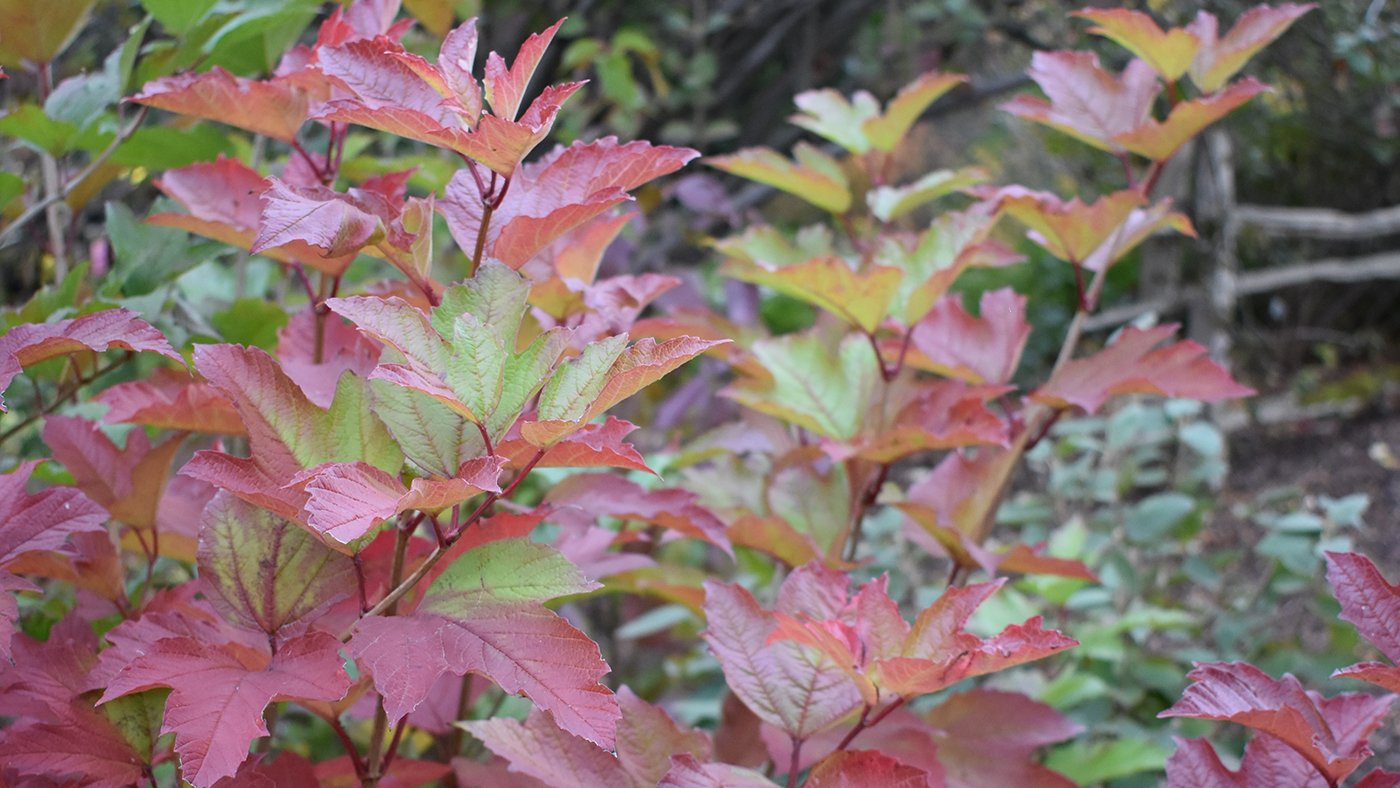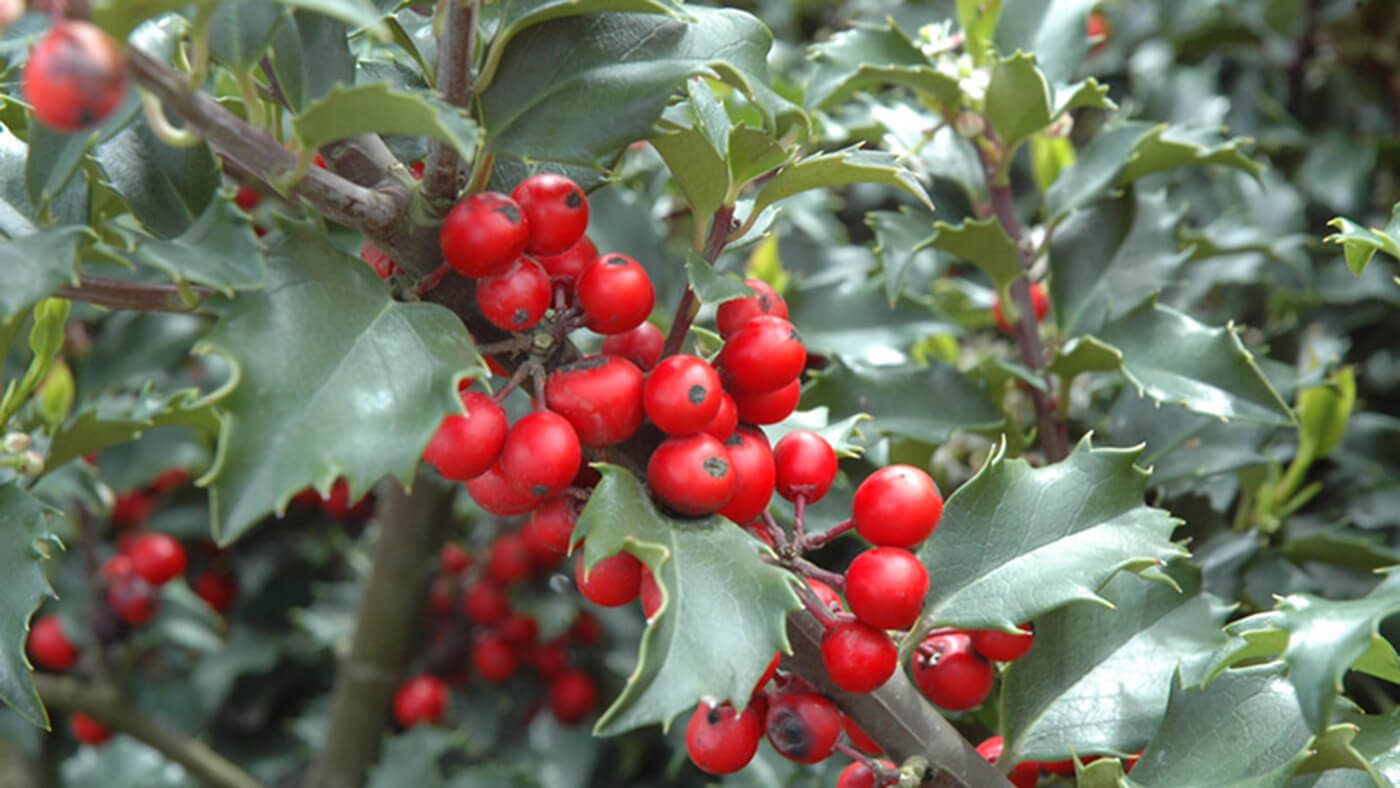
Viburnum Varieties for Landscaping and Naturalizing
Listen to article
Audio generated by DropInBlog's Blog Voice AI™ may have slight pronunciation nuances. Learn more
There are many viburnum varieties for landscaping and naturalizing. Learn about this pillar shrub in Vermont and New England.
Soil and Site Preference
Nearly all viburnum are extremely versatile and can grow in a variety of of soil and site conditions. They can handle wet, heavy soils in sun or shade. The only exception is Koreanspice (Viburnum carlesii) which will not like heavy soil or full shade.
Uses in the Landscape
Viburnum make excellent privacy hedges because they sucker and become dense stands even in the winter. Our Garden Center hedge is a good display of this. The variety of viburnum planted here thoroughly block the view of the drive through the nursery year-round. Viburnum are wonderful for hedgerows and naturalizing woods edges as well.
If you would love a viburnum but don't have as much space, there are excellent compact cultivars such as 'Bailey's Compact' and 'Blue Muffin' that are behaved. Viburnum are celebrated for their wildlife value to birds and pollinators too with their plentiful flowers and rich berries.
Flowers and Fall Color
Their flowers can be grouped into a few categories. All viburnum are excellent for fall color, and their foliage can range from purple, maroon and red.

Flat-Topped Cymes
Native species usually have this type of flower. They don't smell nice to humans, but pollinators love them. They are still very showy in the landscape.

Globular
Very sweet-smelling and wonderfully fragrant, these are found on Koreanspice (Viburnum carlesii)

Lacecap
Found on Doublefile (Viburnum p.t.) - very ornate and partially sterile flowers
Are Viburnum Native?
Native to our area
- Viburnum dentatum - Arrowwood
- Viburnum prunifolium - Blackhaw
- Viburnum lentago - Nannyberry
- Viburnum trilobum - American Cranberrybush
- Viburnum cassinoides
The types you may see blooming along Vermont's fields, windbreaks, and hedgerows are Viburnum dentatum and Viburnum lentago. Viburnum trilobum also grows in the wild, but a little less frequently.
Not considered native to our area
- Viburnum p.t. - Doublefile
- Viburnum opulus - Snowball
- Viburnum carlesii - Koreanspice
- Viburnum lantana - Wayfaring tree

Ornamental Berries
Many customers plant viburnum for their showy flowers and berries that range from blue and black, to red. Viburnum dentatum, Viburnum lentago, and Viburnum prunifolium all have blue-black berries. Viburnum trilobum and others have bright red berries.
If berries are one of your top priorities in planting and you're planting cultivars, be sure to select two different cultivars to ensure pollination. Cultivars are clones and are not genetically different. If you're using straight species, it doesn't matter since they are grown from seed. Straight species can pollinate any cultivars.
Viburnum Leaf Beetle
The Viburnum Leaf Beetle (VLB) is an introduced pest that devastated many viburnum about 10 years ago when it first appeared in this area. Adult beetles and larva can defoliate a plant. This pest has been more mellow in recent years, with occasional reports of them. Viburnum dentatum and Viburnum trilobum are more susceptible than other species.
Pruning and Maintenance
With the exception of compact cultivars, viburnum aren't dainty, small garden plants intended to be pruned regularly into, say, a formal shaped hedge. They are best left to grow to their liking. Their flowering and berries can be affected by pruning regularly as well. We recommend only pruning as needed for dead or diseased material, as well as rejuvenation pruning on older plants. This is where you remove older, woody growth to encourage new growth.
Viburnum Species

Viburnum dentatum (Arrowwood)
Excellent for wildlife as a pollinator plant, food source for berries, and habitat for birds. Indigenous people used the strong shoots that develop from the roots for arrows.

Photo by David J. Stang / CC BY-SA 4.0, Wikimedia Commons
Viburnum prunifolium (Blackhaw)
This species is newer to us. We love it for its lateral branching and rounded shape. Very architecturally interesting.

Viburnum lentago (Nannyberry)
Upright and vase-shaped. More narrow growth when young and vases over when mature. Slight preference for wetter soils.

Viburnum trilobum (American Cranberrybush)
Reliable and often planted for wildlife. Flowers are excellent for nectar and bright red showy berries for food.

Viburnum p.t. (Doublefile)
Very architectural and horizontal branching with attractive flowers that bloom along the branches. They are relatively adaptable and we have been impressed with how they grow in our fields. Foliage turns a consistent deep maroon in fall.

Viburnum lantana (Wayfaring Tree)
We’ve noticed this species is more resistant to pests and disease. It has very showy red berries when mature and its fuzzy leaves are more resistant to deer.

Viburnum carlesii & Viburnum x juddii (Koreanspice)
These are the most fragrant of all. Their sweet fragrance is similar to daphne and this is often the reason they are planted. They flower slightly earlier than native species. Unlike other viburnum that are adaptable to challenging conditions, Koreanspice generally needs well-drained soils and will not thrive in heavy clay.
Viburnum x juddii is a hybrid between Viburnum carlesii and Viburnum bitchiuense bred to be a fuller plant. Its habit is full and rounded, and a bit more dense with similar flowers. Viburnum carlesii can be wandering with more foliage on the top.

Viburnum cassinoides (Witherod)
Witherod is a native shrub that thrives in moist soils. It has creamy white flowers in June and attractive fruit that changes from green to pink to red to blue to black. Good crimson and scarlet fall color.



